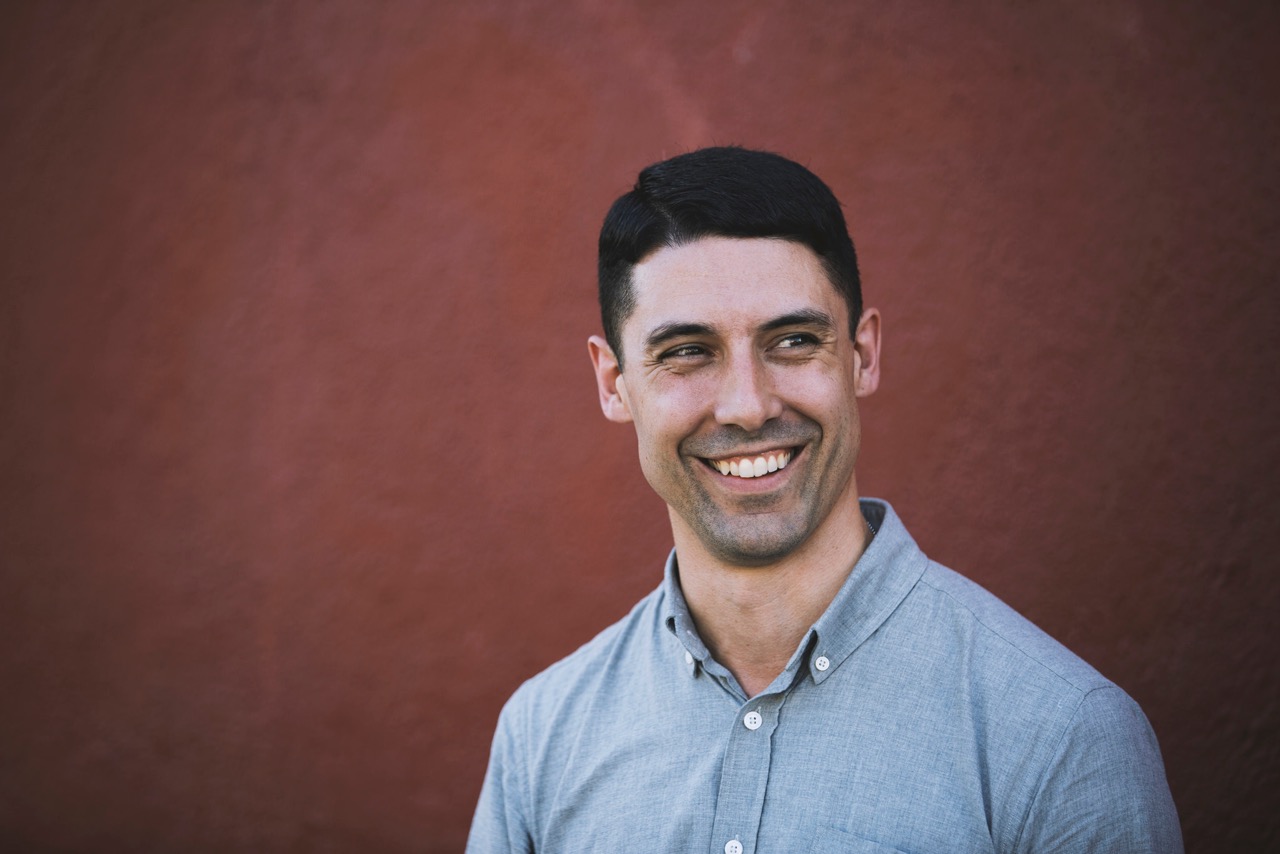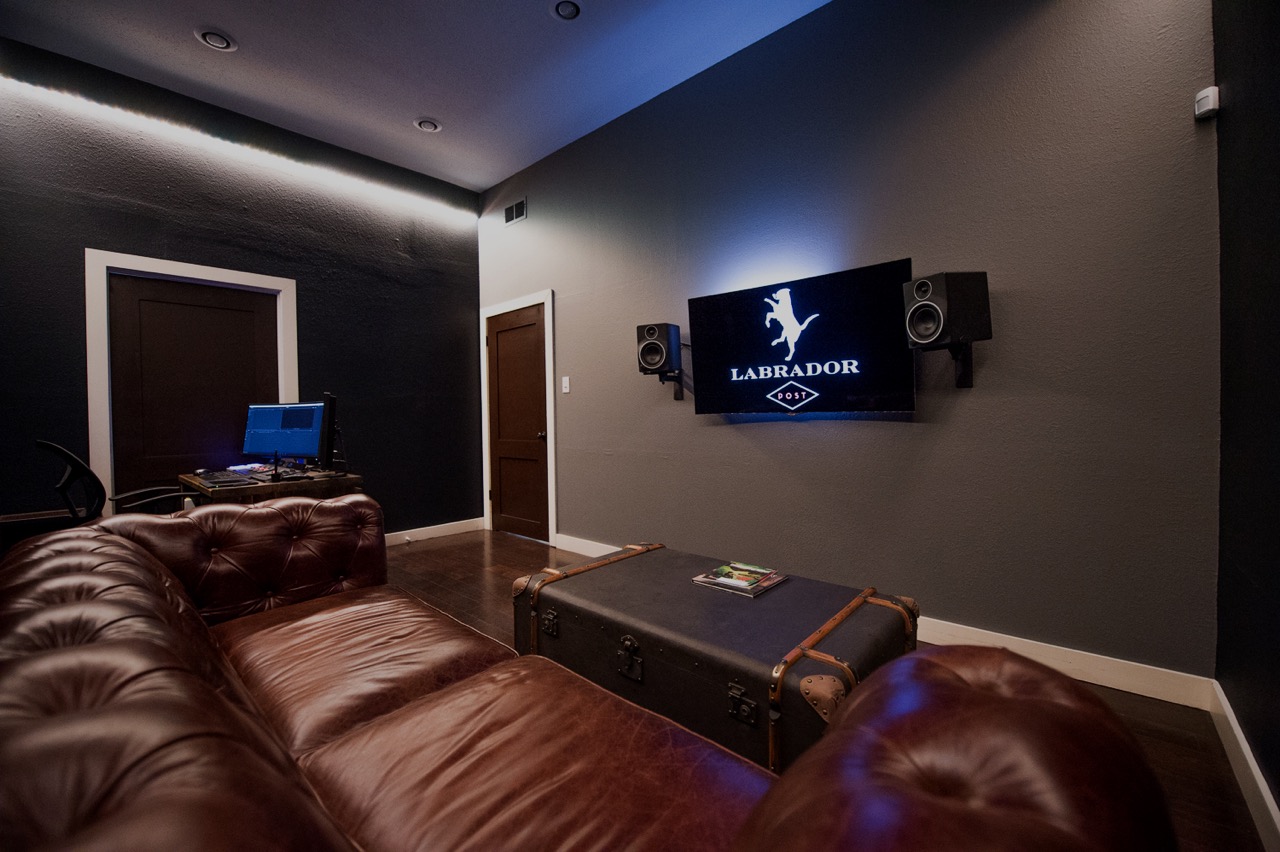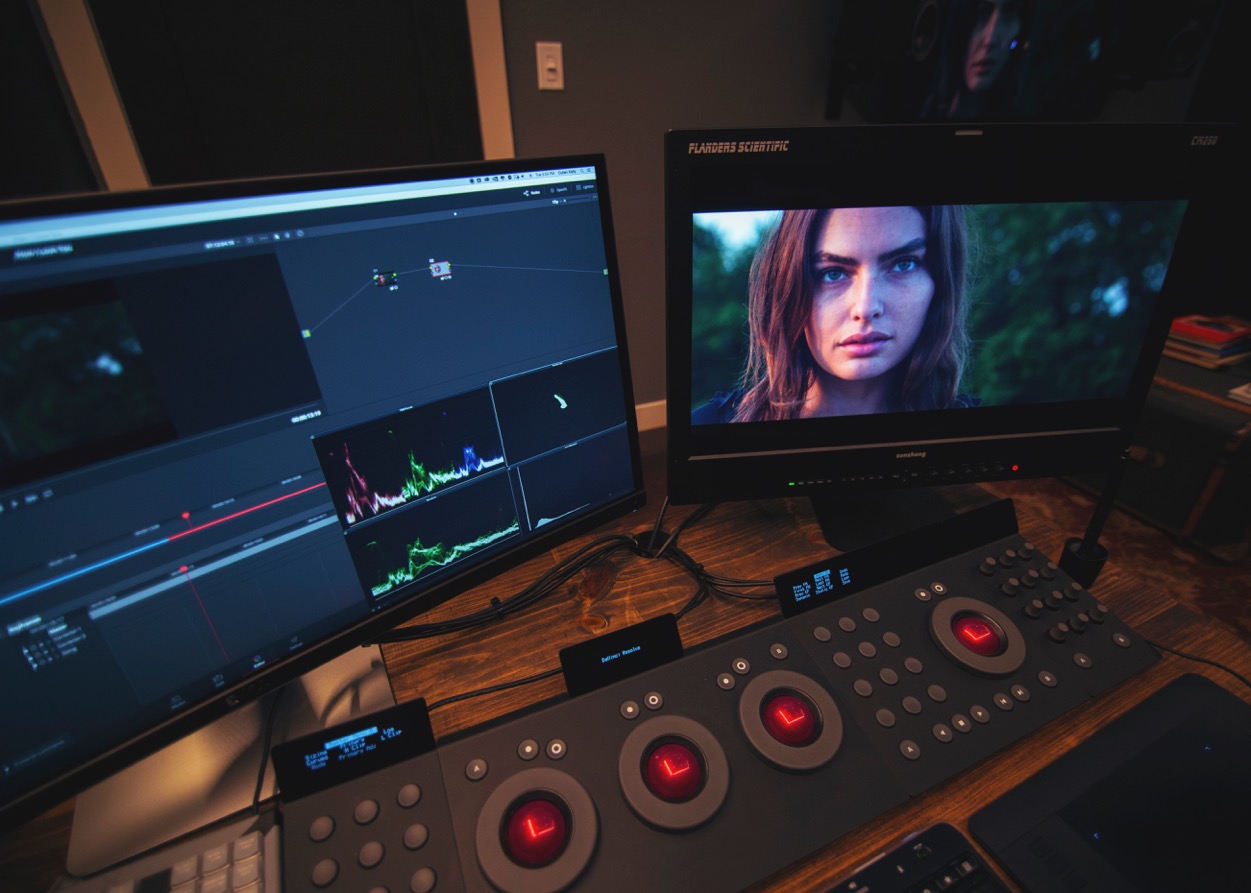ScopeBox Setups — Cullen Kelly

Cullen Kelly is the lead colorist and finishing artist at Labrador Post in Austin, Texas, where he and his team provide first-class polish for film, broadcast, and web content.

Describe your setup.
I work primarily in Davinci Resolve for color. In my suite I’ve got a Dell 34” 21:9 monitor for GUI, an FSI CM250 monitor reference monitor, and a full Tangent Elements set supplemented by a custom-mapped X-Keys XK-80 keyboard. My client monitor is an LG 55EC9300 OLED display with a LUT box in-line.
In the machine room I’ve got a souped-up 2012 Mac Pro 12-core 3.46ghz with 128GB of RAM and a GTX980 video card, plus a Red Rocket-X and two Titan-X GPUs in a Cubix expansion box. I’ve also got a fibre card for connecting to our SAN, and a Blackmagic Decklink Mini Monitor to get signal to the reference displays. Our other online suite is driven by a similar system, and we have two custom PCs patched to our assist room for doing conforms, renders, and deliverables. All media is shared over fibre or 10gigE via a Terrablock 24D SAN.
How are you running ScopeBox? How are you getting the signal into the software?
Each of our online color systems has a dedicated Mac Mini running ScopeBox, with SDI being piped in using Blackmagic UltraStudio Mini Recorders. In my room, I have the 1080 signal from my ScopeBox machine running into my large GUI monitor as a second input, utilizing the monitor’s picture-in-picture feature to monitor my main system and scopes simultaneously. I love the minimalism of only having one GUI display on my desk!

What is your default ScopeBox palette layout and why?
My grading layout is a 4-up of the RGB Parade, Vectorscope, Waveform, and Luma Histogram. Of those, I most often reference the RGB parade and Vectorscope to check levels and overall balance respectively.
I also have a secondary layout at the ready featuring R x G and G x B channel plots, which is super useful for legalization passes – I stole this trick from fellow ScopeBoxer Robbie Carman.
How do you like to use scopes in coloring? What problems do you find yourself turning to your scopes for most?
I rely on my scopes constantly for objective feedback on the work I’m doing. Whether it’s verifying that I’ve correctly balanced something, or confidently proceeding with a highly stylized look, my scopes are my co-pilot and my reality check. In the work I do, making talent look attractive and natural is top priority, so nailing skin tones is a must. I regularly will solo up the vectorscope and pull a quick HSL key of talent’s skin to make sure it’s hitting where I want it to.
As mentioned above, scopes are also our first line of defense for broadcast legalization, so we rely on ScopeBox a ton in that area as well. I try to watch for excursions during session, but there’s always a subsequent pass for anything that might have been missed.
What challenges do you see coming up more in the future / how do you think scopes and cc will change in the next 5 years?
With today’s ever-changing landscape of imaging systems and technologies, I think there’s more onus than ever for the colorist to be technically literate. Much like the modern cinematographer, we’re now looked to not only for our creativity, but for far-reaching expert guidance on the myriad technical decisions that shape a film from prep through delivery. Keeping up on all that stuff can be overwhelming!
On the positive side, that same dizzying evolution is providing more filmmakers with more tools than ever before, and it’s a tremendously exciting time to be in the business of motion imaging. I also think there’s huge untapped potential in technologies like 3D, AR, and VR for changing the way colorists and compositors perform their work. Imagine being able to fill your field of vision with a shot and move through it in three dimensions, making intuitive, tactile manipulations with nothing but your hands! Maybe I’ve just been sitting in a chair for too many years, but I think that level of immersive, physical interaction would be a game-changer for our craft. Whatever change the future brings, the colorist’s need for quality scopes will be a constant, especially as we move into broader color gamut and dynamic range specs.
Thanks Cullen! Where can people find you online?
ScopeBox Setups is a new series of blog posts where we ask ScopeBox users to send in a photo of their suite and answer a few questions about how they’ve setup their workspace. If you’d like to be highlighted for the series, get in touch!